Most PR professionals swear by their Smartphone, Tablet, and PC, all so they can continuously access their social media network. A network, which, in most cases, includes a considerable amount of contacts. And there is no doubt in my mind, that the social media networks exploited by PR practitioners, are of the upmost importance in today’s society. One needs to be constantly available, everywhere, anytime, and always up-to-speed with current events.
Today, with social media, we not only learn about events when they are happening, we also live them, as we share images, video’s and feelings in real-time. A fact which is used as an advantage in many PR campaigns, but is also the a living nightmare for a PR professional during a crisis, as it is incredibly hard to control or even guide these social media outputs, especially considering the amount of sources there are out there. But it’s not only PR professionals who have to deal with the perk AND the pitfalls of social media and the internet.
 Your everyday consumer, client, costumer, public, has problems coping with the speed and the amount of information they get poured over them daily. And sometimes, ever so often, a twinge of nostalgia sprouts from your average Joe. Of course, there are those who consider social media, and sometimes PR, as the devil’s fiery pit, where, once you get trapped here by its lure, you’ll stay to be burned crisply for eternity.
Your everyday consumer, client, costumer, public, has problems coping with the speed and the amount of information they get poured over them daily. And sometimes, ever so often, a twinge of nostalgia sprouts from your average Joe. Of course, there are those who consider social media, and sometimes PR, as the devil’s fiery pit, where, once you get trapped here by its lure, you’ll stay to be burned crisply for eternity.
And, I have to admit, social media and PR are quite enticing. Once you start using it, it’s hard to stop, if not impossible.
Now, what happens then, when you, the public, are sitting in your corner, on a rainy day, wanting some peace and quiet, and PING, your Smartphone shows you yet another Tweet, or Facebook Message, you just HAVE to look at? You. Start. Longing. For. The. Good. Old. Days. The days, where you had time to get your information from your morning newspaper. The days, where you didn’t feel like a total moron if you hadn’t seen the latest sensation on YouTube.
But please, don’t hate the medium. It’s not the medium which posts too much, sometimes useless, information on the web. It’s not the medium which threatens to diminish the quality of creations out there. It’s not the medium which decides to direct all of its time to absorbing as much information about as many subject there are. It’s you. And your neighbour. And your friends. Your many, many, Twitter friends. So why do we do it?
 Because we want to feel CONNECTED. We want to belong. Nothing more, nothing less. And we have to admit, social media is the ideal method to do this (next to going to a pub and having a chat of course, which you just CAN’T do all day long). For example, on foursquare, you can become a part of groups of people who visit the same places you do, like a cinema or pub. On Spotify, you can learn which people have the same taste in Music as you do. And so on.
Because we want to feel CONNECTED. We want to belong. Nothing more, nothing less. And we have to admit, social media is the ideal method to do this (next to going to a pub and having a chat of course, which you just CAN’T do all day long). For example, on foursquare, you can become a part of groups of people who visit the same places you do, like a cinema or pub. On Spotify, you can learn which people have the same taste in Music as you do. And so on.
In a nutshell, social media expands borders, broadens horizons, and allows us the option of choice. We can choose who to BEFRIEND, choose who to SHARE our lives with, and because we can choose, from a global pool of people and identities, we feel CONNECTED. Even better, we are connected with people JUST. LIKE. US. People who have the same interests, the same preferences, and make the same choices. So we like ’em, and we trust ’em. Subsequently, we trust the recommendations they make, which again, is to the benefit of all, not in the least the PR professional. That is why it is so essential in PR to build sustainable relationships with your publics.
So let’s be honest, if you don’t want to experience social media overload and possible meltdown, just use what you want, when you want, and don’t let a beautiful medium control you. YOU CONTROL THE MEDIUM.
Of course, for the PR professionals out there, it’s just as important for you to not get controlled by social media. There are some tools out there, which can help you select the essential information you need and want, such as: 48ers, a REALTIME social search engine that acquires its results from Twitter, Facebook, Google Buzz, Digg and Delicious. With paper.li you can create your own online newspaper (updated daily) from Twitter and Facebook updates based on any topic or user group.
And the beauty of it all is, you can help your public, by helping them decide what it is THEY want. Target the right public, in the right way, and they’ll love you all the more for it. Honestly, nobody likes it if you bomb them with crap that doesn’t concern them. Remember, it’s hard for the public too, to decipher quality and essential information from the oozing pool of uselessness out there.
And perhaps, as a PR professional, you might consider using your public’s nostalgic twinge in your benefit. Coca cola has, as always it seems, been on the ball with their reinvention of the Break Man advert. The new and improved Coca-Cola Light man from the 90’s can be admired here. But, don’ t forget, before you can use nostalgia to your own benefit as a PR professional, first you need to have created a bond with your public, and have a history you can fall back on.
To conclude, one of my all time favourite, nostalgic, Belgian, advertisements: T-man, my sweet hero from Tienen.

 PR practitioners and (cultural) organisations need to be aware that the more people they reach online, the more likely it is that they will lose control over their messages. Because everything on the web is so readily available, anybody can (in theory) adapt information and messages posted online. This means that anybody can become a (re) creator of content.
PR practitioners and (cultural) organisations need to be aware that the more people they reach online, the more likely it is that they will lose control over their messages. Because everything on the web is so readily available, anybody can (in theory) adapt information and messages posted online. This means that anybody can become a (re) creator of content. Curators
Curators In a sense, online web curators are not so different from museum or digital curators.
In a sense, online web curators are not so different from museum or digital curators. 
 Slowly but gradually, it seems that a lot of cultural and not-for profit organisations are starting to use social media. However, some recent technological advancements could provide museums and other institutions with even more innovative ways to attract audiences and increase public participation and interactivity.
Slowly but gradually, it seems that a lot of cultural and not-for profit organisations are starting to use social media. However, some recent technological advancements could provide museums and other institutions with even more innovative ways to attract audiences and increase public participation and interactivity.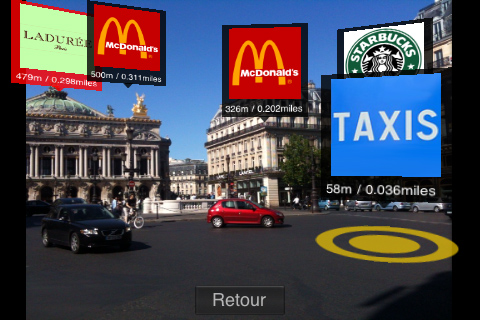


 Recently, the Anne Frank Organisation launched the smartphone app “
Recently, the Anne Frank Organisation launched the smartphone app “
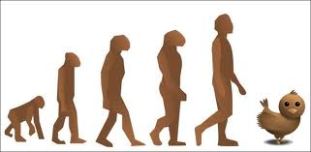
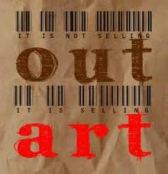 As mentioned in an earlier blog post, the cultural sector still feels a bit uncomfortable using PR and social media, partly because they fear it might diminish a personal level of customer service, cause alienation, or result in a waning of the cultural offer and knowledge, making the cultural industry profit-orientated and therefore selling out the integrity and autonomy of the sector by giving the public to much influence on the displayed art. It is indeed hard to reach a diversified broad audience, while also keeping the public focused on, for example, the identity of a museum. However, social media should be seen as a tool that paints an online picture of a museum, while ensuring that the virtual and the real world both receive cohesive messages that reach the museum’s publics. Therefore, social media is not to be feared, but embraced.
As mentioned in an earlier blog post, the cultural sector still feels a bit uncomfortable using PR and social media, partly because they fear it might diminish a personal level of customer service, cause alienation, or result in a waning of the cultural offer and knowledge, making the cultural industry profit-orientated and therefore selling out the integrity and autonomy of the sector by giving the public to much influence on the displayed art. It is indeed hard to reach a diversified broad audience, while also keeping the public focused on, for example, the identity of a museum. However, social media should be seen as a tool that paints an online picture of a museum, while ensuring that the virtual and the real world both receive cohesive messages that reach the museum’s publics. Therefore, social media is not to be feared, but embraced.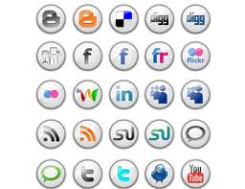 After exploring these innovative ways in which museums and not-for profit organisations have adopted social media techniques and used them for their own goals, I believe that the cultural sector is slowly beginning to embrace social media, and starting to wield it in an appropriate manner. Of course, there are much more possibilities that the cultural sector needs to explore. Facebook, Twitter, Blogs, and QR codes are only the tip of the Iceberg (no pun intended). Wiki’s are also a great method of sharing information and comparing or expanding knowledge. Wikipedia hosts numerous projects to develop content, including
After exploring these innovative ways in which museums and not-for profit organisations have adopted social media techniques and used them for their own goals, I believe that the cultural sector is slowly beginning to embrace social media, and starting to wield it in an appropriate manner. Of course, there are much more possibilities that the cultural sector needs to explore. Facebook, Twitter, Blogs, and QR codes are only the tip of the Iceberg (no pun intended). Wiki’s are also a great method of sharing information and comparing or expanding knowledge. Wikipedia hosts numerous projects to develop content, including  The technological and digital divide between generations in visitors and between museum technologists, public relations practitioners and curators need to be bridged. Stereotypes and prejudices need to be conquered and interdisciplinarity and cross-industry interaction is required. I’m not saying that the mission or vision of cultural institutions need to be changed, far from it, only the way the messages and experiences are portrayed and presented needs to change and adapt to current up-to-date technology and customer expectations. I understand that it seems as an impossible problem to make the visceral as relevant, dynamic and interesting as the virtual, while also keeping up-to-date with the latest social media tools. But, it’s definitely not impossible to translate our most innovative virtual activities into onsite experiences.
The technological and digital divide between generations in visitors and between museum technologists, public relations practitioners and curators need to be bridged. Stereotypes and prejudices need to be conquered and interdisciplinarity and cross-industry interaction is required. I’m not saying that the mission or vision of cultural institutions need to be changed, far from it, only the way the messages and experiences are portrayed and presented needs to change and adapt to current up-to-date technology and customer expectations. I understand that it seems as an impossible problem to make the visceral as relevant, dynamic and interesting as the virtual, while also keeping up-to-date with the latest social media tools. But, it’s definitely not impossible to translate our most innovative virtual activities into onsite experiences.

 Facebook, blogging and Twitter are considered as relatively useful, but archaeologists consider them to be limited in their application possibilities. I disagree. I personally think this is caused not by the lack of possibilities of the social media applications, but by the lack of knowledge, guidance, and experience when using these tools.
Facebook, blogging and Twitter are considered as relatively useful, but archaeologists consider them to be limited in their application possibilities. I disagree. I personally think this is caused not by the lack of possibilities of the social media applications, but by the lack of knowledge, guidance, and experience when using these tools.


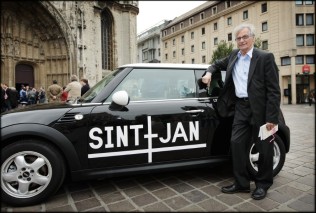
 the cultural sector one of PR’s goals will be to increase public interest and attendance by creating a strategized PR campaign, which will include more than just determining an audience or using certain tools. The foundations for these PR campaigns will be trust and trustworthiness.
the cultural sector one of PR’s goals will be to increase public interest and attendance by creating a strategized PR campaign, which will include more than just determining an audience or using certain tools. The foundations for these PR campaigns will be trust and trustworthiness. In recent years, the internet has become an incredible source of information. Nowadays, it is hard to shift through all this readily available knowledge to find just the right answers which users are looking for. Subsequently,
In recent years, the internet has become an incredible source of information. Nowadays, it is hard to shift through all this readily available knowledge to find just the right answers which users are looking for. Subsequently,  The cultural sector’s ‘sceptical thinkers’ fear that by putting management, marketing or PR to work, the cultural sector will become totally profit orientated because of the competitive pressure of today’s society. Sceptics even fear that this will lead to a ‘one size fits all’ principle. This would mean that the preferences of the majority of the public would dominate the artwork on display (or for creation) in such a degree that all the art on offer would be of a similar taste.
The cultural sector’s ‘sceptical thinkers’ fear that by putting management, marketing or PR to work, the cultural sector will become totally profit orientated because of the competitive pressure of today’s society. Sceptics even fear that this will lead to a ‘one size fits all’ principle. This would mean that the preferences of the majority of the public would dominate the artwork on display (or for creation) in such a degree that all the art on offer would be of a similar taste. However, I have to make clear that, even though it might appear so in this blog, government, organisations, museums, artists, audiences and the general public are not on opposite sides, they are only trying to function at the best of their capabilities in a difficult socio-economical environment. But even though I do see the possible problems and recognise the fears of the art industry, I do not however consider as PR a part of the problem.
However, I have to make clear that, even though it might appear so in this blog, government, organisations, museums, artists, audiences and the general public are not on opposite sides, they are only trying to function at the best of their capabilities in a difficult socio-economical environment. But even though I do see the possible problems and recognise the fears of the art industry, I do not however consider as PR a part of the problem.
 In the UK this feeling is mostly caused by the
In the UK this feeling is mostly caused by the